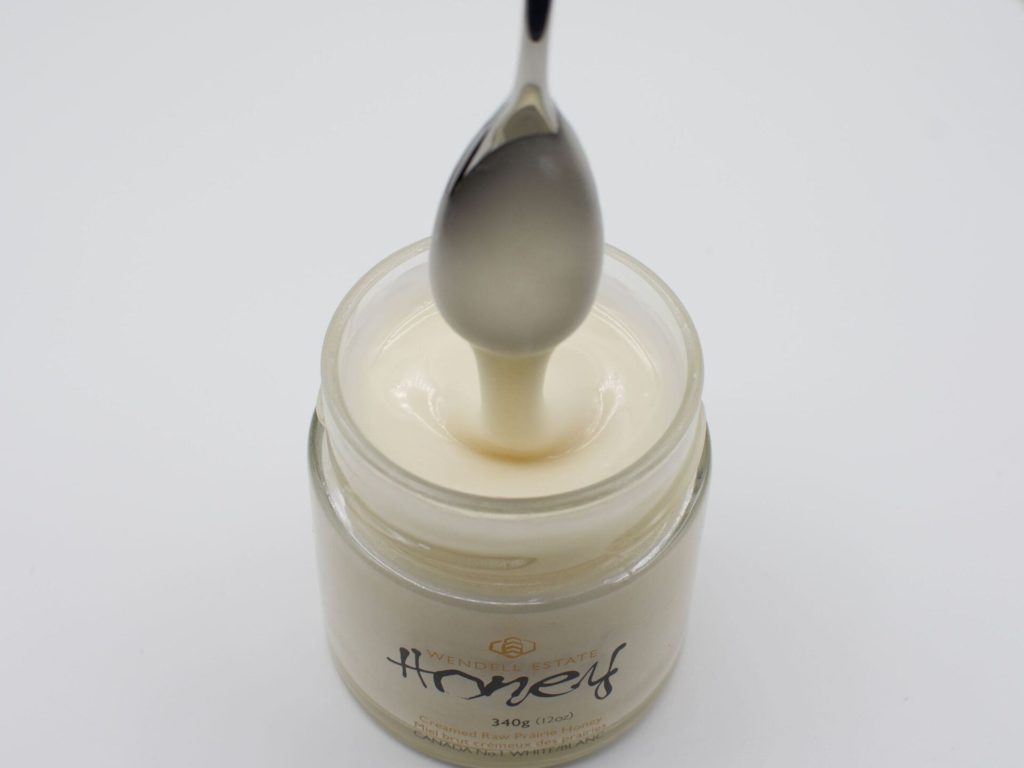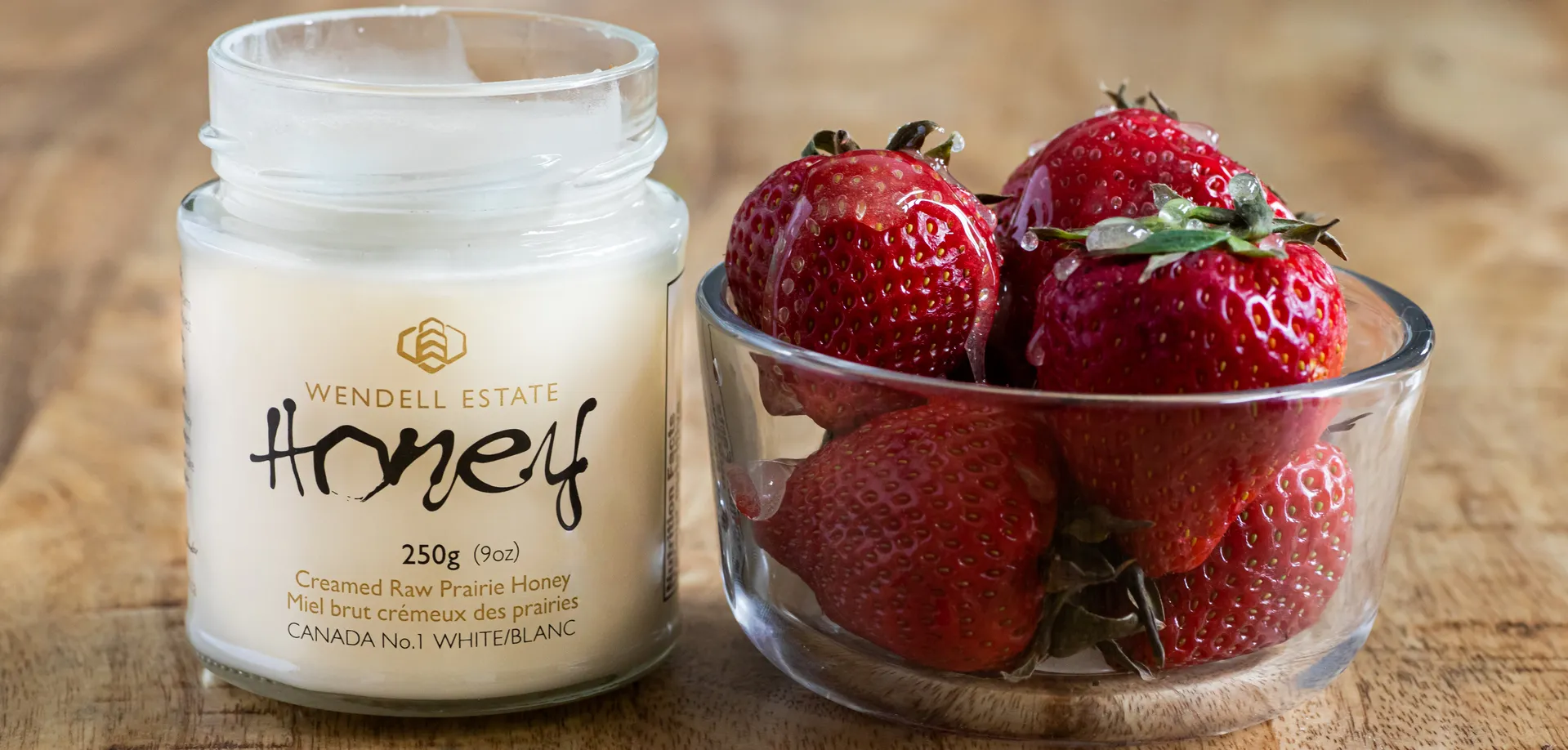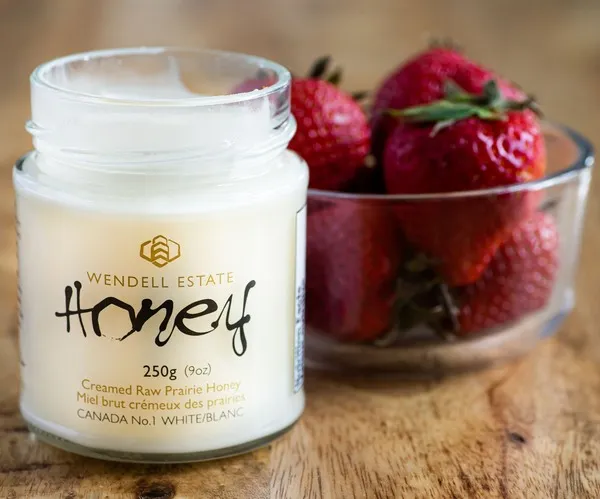
Soft Set Honey and Creamed Honey Explained
The short answer:
Soft-set honey is honey that has crystallized into a semi-solid form, as opposed to the initial liquid form of natural honey.
The long answer:
Most people think of honey as a viscous liquid, and this is indeed the the natural state of freshly-made honey. Over time, most (but not all) natural honeys will gradually crystallize into a granular solid. The rate at which natural honeys undergo crystallization depends on many factors, with the most important being the floral source and the ambient temperature. Most honey harvested on the Canadian prairies tends to crystallize relatively quickly, becoming quite hard over weeks if stored at room temperature, and even quicker if exposed to colder temperatures (not uncommon in Canada). There’s nothing inherently wrong with granulated honey, but the hard, course texture of the large crystals makes it un-spreadable and less convenient to use. By controlling the crystallization, small crystals that can be achieved, such that the honey is easier to spread and has a more pleasing texture on the tongue. For this reason, it is common for Canadian honey producers to allow (or encourage) the honey to crystallize in a controlled fashion before selling the honey.
How to get soft-set honey from liquid honey
Common methods used to transition raw liquid honey to soft-set, or “creamed” honey are mostly variations on the Dyce method, pioneered by Elton Dyce in the 1930s. In these methods, a “seed honey” with extremely small crystals is first generated by mechanically smashing naturally granulated honey. About 1 part seed honey to 10 parts liquid honey is used. The liquid honey is warmed and the seed honey is stirred into the liquid honey. After the two honeys are thoroughly mixed, the product is transferred to a cooler room to allow the crystallization to take place.
Why we call our honey "soft-set" instead of "creamed"
When the Dyce, or related methods using seed honey are used, the final product is often referred to as “creamed honey”. We don’t use the Dyce method or add any seed honey to our liquid honey. In fact, other producers of creamed honey have asked to use our super-smooth soft-set honey as seed honey for their creamed honey. Also, newer Canadians and Americans may not be familiar with the term “creamed honey”. Given our honey’s especially white color and smooth texture, some customers have asked us if we add cream to the honey (we don’t! But our honey is often compared to ice cream due to the texture and pleasant sweetness). To avoid confusion, we prefer to call our honey “soft-set honey”. We simply package the liquid honey fresh into the retail jars and let it crystallize naturally in the jars. The “magic” lies in selecting only the best honey of the right type and packaging it directly into the retail jars before crystallization has a chance to start in a bulk drum (how most brands obtain their honey).
What if your liquid honey has crystallized into an inconvenient granulated solid?
Gradually crystallizing into a hard solid as a natural process with most honeys. It doesn’t represent anything wrong with the honey or any deterioration. It’s analogous to water freezing into ice, or liquid wax solidifying as it cools.
If you do have liquid honey that has granulated into an inconveniently hard form, you can always melt it by gently heating it to return it to a liquid form. Please read our detailed storage instructions here before melting your Wendell Estate Honey, as it will not likely return to its original smooth form once cooled.
Our award-winning soft-set raw honey isn’t “creamed”, but our signature creamy texture is smoother than any. Try for yourself!


Share this story
